Starting ice skating as an adult? Picking the right skates can make or break your experience. Ill-fitting skates can lead to discomfort, poor balance, and even injuries, while the right pair helps you learn faster and enjoy the process. Here's what you need to know:
- Fit matters: Ice skates often run smaller than regular shoes (0.5–1.5 sizes smaller). A snug fit prevents blisters and gives better control.
- Support is key: Look for padded ankles, firm boots, and good lacing systems to keep you steady.
- Blade quality counts: Stainless steel blades with a moderate rocker are ideal for beginners, offering stability and easier gliding.
For a hassle-free start, consider Snowfeet Mini Ski Skates ($250). They’re lightweight, work with your winter boots, and are easier to learn than traditional skates. If you prefer classic skates, brands like Bauer and Jackson offer solid options, though they may require a break-in period and upkeep.
Ready to hit the ice? Let’s dive into the details to help you pick the perfect skates!
What kind of ice skates to buy for beginner adult skaters
What to Look for in Beginner Ice Skates
Shopping for your first pair of ice skates as an adult? Nailing down the right comfort and fit, support and stability, and blade quality can make all the difference between gliding confidently on the ice or dealing with sore feet, shaky ankles, and constant spills.
Comfort and Fit
Getting the right fit is a game-changer. Ice skates don’t match your regular shoe size - they’re usually 0.5 to 1.5 sizes smaller. So, if you wear a size 9 in street shoes, you’ll likely need a 7.5 or 8 in skates.
Your skates should feel snug but never painfully tight. When laced up, your heel should sit firmly in place without lifting as you flex your ankle. Many beginners mistakenly go for bigger sizes, thinking they’ll be more comfortable, but loose skates can lead to blisters, poor control, and a higher risk of falling.
Look for skates with padded ankle and tongue areas. Features like memory foam or gel inserts can make longer sessions much more comfortable. Some beginner models even include adjustable sizing options, such as removable insoles or expandable sections, to accommodate minor size changes or foot swelling during extended use.
Length isn’t the only factor - width matters too. Skates come in narrow (B), regular (D for men, B for women), and wide (E or EE) sizes. If you’ve got wider feet, squeezing into regular-width skates will only lead to discomfort and less control on the ice.
Support and Stability
Once the fit is sorted, good support keeps you steady on the ice. Ankle support is especially crucial for adult beginners, as adults generally need more structure to protect against injuries and maintain balance. Look for skates with reinforced ankle areas and higher boot cuts that fully cover your ankles.
The material of the boot plays a big role. Synthetic leather or genuine leather boots tend to offer better structure compared to softer fabric options. The boot should feel firm around your ankle but not so tight that it cuts off circulation. Proper lacing should hold your ankle in a neutral position, preventing it from rolling inward or outward.
For a secure fit, you can go with traditional laces or a mix of laces and Velcro. Laces offer the most customizable fit, allowing you to adjust tightness at different points, but they can take longer to tie and might loosen while skating. Some beginner skates feature buckle systems, which are quicker to adjust and easier to handle with cold hands.
Don’t overlook the tongue of the skate. It should be well-padded to evenly distribute pressure from the laces, avoiding painful pressure points during longer sessions.
Blade Quality and Ease of Use
Once you’ve got comfort and stability down, blade quality becomes key. For beginners, stainless steel blades are a solid choice - they resist rust and keep their edge longer than carbon steel. While most beginner skates come with pre-sharpened blades, it’s a good idea to have them professionally sharpened every 15–20 hours of skating.
The length and profile of the blade also affect your experience. Longer blades provide better stability but can be harder to maneuver, while shorter ones offer more agility but require better balance. For adult beginners, a standard recreational blade profile strikes a good balance, offering stability while you learn the basics.
Pay attention to the rocker, or the curve of the blade from toe to heel. A flatter rocker gives more stability for gliding and stopping, while a more curved rocker allows for sharper turns but demands better balance. Most recreational skates are designed with a moderate rocker, ideal for beginners.
Finally, check the blade mounting and boot attachment. Quality skates have blades securely mounted with proper alignment straight from the factory. Avoid skates where the blade attachment seems flimsy or misaligned.
Weight matters too. Lighter skates are easier to handle and reduce fatigue, but don’t go too light - some ultra-light models compromise on support and durability. For beginners, aim for skates in the 2-3 pound range per skate for a good mix of comfort and sturdiness.
With the right skates, you’ll be set to move from those first wobbly steps to smooth, confident strides on the ice.
Snowfeet* Mini Ski Skates: The Best Choice for Adult Beginners
If you're new to skating and looking for an option that's less intimidating than traditional ice skates, Snowfeet* Mini Ski Skates might be just what you need. These 15-inch (38 cm) mini ski skates are designed with adult beginners in mind, offering a blend of comfort, stability, and easy control. Let’s dive into why they’re a solid pick for your first skating adventure.
Use Your Regular Winter Shoes
One of the standout features of Snowfeet* Mini Ski Skates is their compatibility with everyday winter shoes. You don’t need to invest in specialized skating boots - your trusty winter, snowboard, or hiking boots will work just fine. This saves you from the headache of dealing with unfamiliar sizing, uncomfortable fits, or the added expense of new gear.
Thanks to an adjustable binding system, these skates secure snugly to a variety of footwear, giving you immediate comfort and support. For beginners, this means less time worrying about your equipment and more time focusing on the fun of learning to skate.
Lightweight and Easy to Carry
Portability is a big deal, especially when you’re just starting out. Unlike traditional ice skates, which can be bulky and heavy, Snowfeet* Mini Ski Skates are lightweight and compact. At just 15 inches long, they easily fit into a backpack, making them perfect for on-the-go skaters. Whether you’re tossing them in your car trunk or taking them on public transportation, they’re simple to bring along.
This portability is especially handy in the U.S., where skating might take you to a variety of spots - mountain resorts, frozen lakes, or even your local seasonal rink. Picture yourself heading to a cozy cabin in Colorado or a winter getaway in Vermont - these skates travel with you effortlessly. Plus, their lightweight design helps reduce fatigue, so you can practice longer without feeling weighed down.
Easier to Learn
Snowfeet* Mini Ski Skates are shorter than traditional skates or skis, and that makes a big difference for beginners. Their compact design allows for better control, smoother turns, and quicker recovery from balance slips. This shorter length encourages natural movement, making them feel more intuitive - almost like skiing on ice.
For many adults, this skiing-like motion feels easier to pick up than the techniques required for traditional ice skating. You’ll find yourself gaining confidence faster, which means more time enjoying the experience and less time struggling to find your footing.
Budget-Friendly Option
At $250, Snowfeet* Mini Ski Skates offer a cost-effective way to dip your toes into the skating world. They’re a great option if you’re still figuring out how much you enjoy the activity without breaking the bank. Plus, they’re versatile - you can use them on ice, snow-covered surfaces, frozen ponds, and even some artificial skating areas.
Their straightforward design is built to last, reducing the chances of equipment failures and cutting down on maintenance costs compared to more complex traditional skates. This makes them a practical choice for beginners who want to focus on skating, not repairs.
Snowfeet* vs Traditional Ski and Snowboard Brands
When you think about winter sports gear, big names like Burton, K2, Rossignol, and Salomon probably come to mind. These brands have been go-to choices for seasoned skiers and snowboarders for years. But Snowfeet* is carving out its niche by focusing on a different crowd: adult beginners.
Traditional skis and snowboards are all about long, specialized equipment designed for high performance. Most skis and boards measure over 140 cm and require specific boots to go along with them. Snowfeet*, on the other hand, offers Mini Ski Skates that measure just 15 inches (38 cm). And here’s the kicker: you can wear them with your regular winter shoes. No need for bulky boots or storage hassles.
Snowfeet* keeps things simple and approachable. Their compact design can fit in a backpack, making it super convenient for beginners. Plus, it’s not just about portability - it’s about making the learning process easier and safer. For adults just starting out, this streamlined setup can be a game-changer. The table below breaks down how Snowfeet* stacks up against traditional gear.
Key Comparison Points
| Feature | Snowfeet* Mini Ski Skates | Traditional Ski/Snowboard Gear |
|---|---|---|
| Length | 15 inches (38 cm) | Typically over 140 cm |
| Weight | Lightweight and compact | Heavier and bulkier |
| Footwear | Use your regular winter shoes | Requires specialized boots |
| Learning Curve | Intuitive and user-friendly | Often requires professional lessons |
| Storage | Compact storage | Needs more dedicated space |
| Transportation | Fits in a car trunk or backpack | Often demands an SUV or roof rack |
| Price Range | Starts at $250 (complete solution) | Generally higher with added gear costs |
| Versatility | Works on slopes, parks, backyards | Optimized for specific conditions |
| Setup Time | Quick setup with your own shoes | Requires more time for boot fittings |
| Maintenance | Minimal upkeep | Regular waxing and tuning needed |
Snowfeet* is all about keeping winter sports fun and stress-free for beginners. Whether you’re hitting the slopes, playing in a park, or just enjoying your backyard, their gear is designed to make the experience as straightforward as possible. And for anyone who’s ever wrestled with a pair of ski boots, that’s a pretty big win.
sbb-itb-17ade95
Best Beginner Ice Skates for Adults (US Market)
Choosing the right ice skates as an adult beginner can feel like a daunting task. To make things easier, here’s a look at some top options available in the US that are designed to help you build confidence and improve quickly.
Snowfeet Mini Ski Skates_*
If you're just starting out, the Snowfeet Mini Ski Skates_* are a standout option. These compact skates, measuring only 15 inches (38 cm) in length, are perfect for beginners who might find traditional, longer skates a bit intimidating.
What makes them especially appealing is their compatibility with your regular winter shoes. There's no need to invest in expensive, specialized boots, so you can focus on learning the basics right away. At $250, they offer a complete setup that’s ready to go - no extra costs for boots that can often run an additional $200–$400.
Another big plus? Their lightweight and portable design. You can easily toss them in your backpack, making them ideal for busy adults who want to hit the rink without lugging around heavy gear. This convenience means you’re always ready for some skating fun.
The compact size also gives you better control, which can speed up your learning process. Plus, they’re versatile enough to handle various winter surfaces, so you can practice and enjoy them throughout the season. Whether you're on the ice or trying out other snowy terrains, these skates make getting started simple and stress-free.
While Snowfeet* Mini Ski Skates offer a beginner-friendly, hassle-free experience, traditional ice skates bring their own set of benefits worth exploring.
Other Beginner Ice Skates
If you lean toward a more classic skating experience, traditional skates from brands like Bauer, Jackson, and CCM are solid choices. However, keep in mind that these options often come with additional costs and a bit of a learning curve.
- Bauer Vapor X2.7: Priced between $199 and $249, these entry-level hockey skates are known for their snug fit and solid ankle support. That said, they do require a break-in period, and their forward-leaning design might feel awkward at first.
- Jackson Ultima Excel: For figure skating enthusiasts, this affordable option ranges from $89 to $129. These skates come pre-sharpened and provide good ankle support, but the stiff boot can be uncomfortable during extended sessions.
- CCM Ribcor 68K: At $179–$219, these skates feature a softer boot, which many beginners find more forgiving. However, like other traditional skates, they often need proper fitting, a break-in period, and ongoing maintenance.
- Riedell 110 Opal: Designed for recreational use, these skates cost around $109–$149. They focus on comfort and offer a nice balance of support and flexibility. However, frequent skaters may find their durability lacking over time.
For adults who want to skip the hassle of fittings, break-ins, and extra expenses, Snowfeet* Mini Ski Skates are an excellent alternative. They provide a simple, ready-to-go option that removes many of the barriers beginners often face when getting into skating.
Getting Started: Tips for Adult Beginner Skaters
Learning to ice skate as an adult is easier than you might think, especially if you focus on getting the right fit, staying safe, and taking care of your gear.
Sizing and Fit Tips
Getting the right fit is key to feeling comfortable and staying in control on the ice. Ice skate sizes don’t match up with regular shoe sizes. For men, skates are usually 1 to 1.5 sizes smaller than their US shoe size, while women’s skates are typically 2 to 2.5 sizes smaller. So, if you wear a size 10 men’s shoe, you’ll probably need an 8.5 or 9 in skates.
But it’s not just about length. Your foot’s width, volume, and arch height also matter when finding the best fit. The right skates should feel snug and supportive, not tight or painful. A good fit improves balance, helps prevent injuries, and makes skating more enjoyable.
Here’s how to measure your feet at home:
- Place a sheet of paper against a wall and stand with your heel touching the wall.
- Mark the tip of your longest toe and measure the distance from the wall.
- Measure the widest part of your forefoot.
- Measure both feet and use the larger measurement.
When comparing your measurements to a size chart, add a few millimeters to your foot length and round up to the next size. Keep in mind that new skates might feel stiff at first but will break in over time to match the shape of your foot. If you’re using Snowfeet Mini Ski Skates, you can skip the sizing hassle since they work with your regular winter boots - no breaking in required!
Once you’ve got the right fit, it’s time to think about staying safe on the ice.
Safety Considerations
Safety is a big deal when you’re just starting out. One of the most important things is making sure your skates provide solid ankle support. Snowfeet Mini Ski Skates are designed with stability in mind and pair with your winter boots, giving you secure support right from the start. And don’t forget to practice safe skating habits, like staying aware of your surroundings and avoiding crowded rinks.
Skate Care and Maintenance
Taking care of your skates doesn’t have to be complicated. A little effort goes a long way in keeping them in great shape. Here are some tips:
- Wipe down your skates after each use to remove snow and ice.
- Store them in a cool, dry place - avoid direct heat.
- For traditional ice skates, get the blades professionally sharpened and use blade guards when walking off the ice.
- Snowfeet Mini Ski Skates are low-maintenance. Just clean them, make sure all parts are dry, and store them in the included carrying case.
- Keep skates away from extreme heat, which can warp the materials.
Finding Your Perfect Beginner Ice Skates
Picking the right beginner ice skates boils down to three key things: comfort, support, and ease of use. A poor fit can lead to blisters or cramping, which is a quick way to lose enthusiasm for skating. Your skates should fit snugly without causing pain - keep in mind, they usually run smaller than your regular shoe size. If you're just starting out, hockey skates might be a better choice than figure skates. They often provide a wider toe box and stronger ankle support, making them beginner-friendly.
For adults looking to skip the hassle of finding the perfect skate size, Snowfeet* Mini Ski Skates are an interesting option. Priced at $250, they’re designed to work with your standard winter boots, offering instant comfort, support, and portability. By eliminating the usual sizing challenges, they remove a common roadblock for beginners.
When you stack up the options, Snowfeet* stands out for its simplicity. Unlike traditional skates or even ski gear, which often require specialized boots, long equipment, and a steep learning curve, Snowfeet* focuses on making skating accessible. No need for pricey ski boots, endless lessons, or trips to specific slopes. Just grab your winter boots and hit any frozen surface - be it an ice rink, a pond, or even your snowy backyard.
Snowfeet* Mini Ski Skates also come with added perks: they’re easier to learn, take up minimal storage space, and work on a variety of terrains. Whether you’re gliding across an ice rink or playing around in the snow, they’re versatile and beginner-friendly.
Whether you go with Snowfeet* or traditional ice skates, always prioritize fit and comfort. Take time to measure your feet properly, factor in the break-in period for traditional skates, and make sure you’ve got solid ankle support for safety. A good fit isn’t just about comfort - it’s about building confidence on the ice.
FAQs
What makes Snowfeet Mini Ski Skates different from traditional ice skates for beginners?
Snowfeet Mini Ski Skates are an exciting twist on winter sports, especially for those new to snowy adventures. Unlike traditional ice skates, which rely on flat, stable blades for gliding across ice, Snowfeet are crafted from durable plastic with metal edges. The coolest part? You can strap them onto your regular winter shoes or snowboard boots. This makes them super light, easy to carry, and incredibly handy.
These mini ski skates are great for activities like skiskating or cross-country skiing. They come with adjustable bindings, so they work with a variety of footwear. Plus, their shorter length (up to 47 inches) offers better control, making them a confidence-booster for beginners. While ice skates are perfect for learning the basics on rinks, Snowfeet bring a whole new level of fun with their all-terrain capabilities and easy portability. It’s winter sports, reimagined!
How can I find the right size and fit for ice skates if they don’t match my regular shoe size?
Finding the perfect size and fit for ice skates is key to both comfort and performance. Unlike regular shoes, ice skates often run smaller, so it’s important to measure your foot’s length and width carefully. Most brands offer handy size charts to match your measurements to the right skate size.
When you try on skates, they should feel snug but not painful. Your toes should gently touch the front of the boot without being squished. If you’re just starting out, focus on comfort and support - it’ll make learning much more enjoyable. And if you’re unsure about sizing, a visit to your local skate shop for a professional fitting can save you a lot of hassle.
How do you maintain Snowfeet Mini Ski Skates compared to regular ice skates?
Keeping your Snowfeet Mini Ski Skates in top shape is a breeze. To keep the base smooth and fast, apply wax regularly. This helps you glide effortlessly on the slopes. For sharp, precise turns, make sure to tune the metal edges. You can either use a tuning tool at home or swing by your local ski shop for a professional touch.
After every session, take a moment to dry the edges completely. This simple step prevents rust and keeps your skates ready for action. Unlike traditional ice skates, Snowfeet Mini Ski Skates are built for convenience and versatility, so maintaining them is refreshingly straightforward.







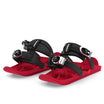
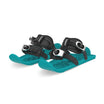












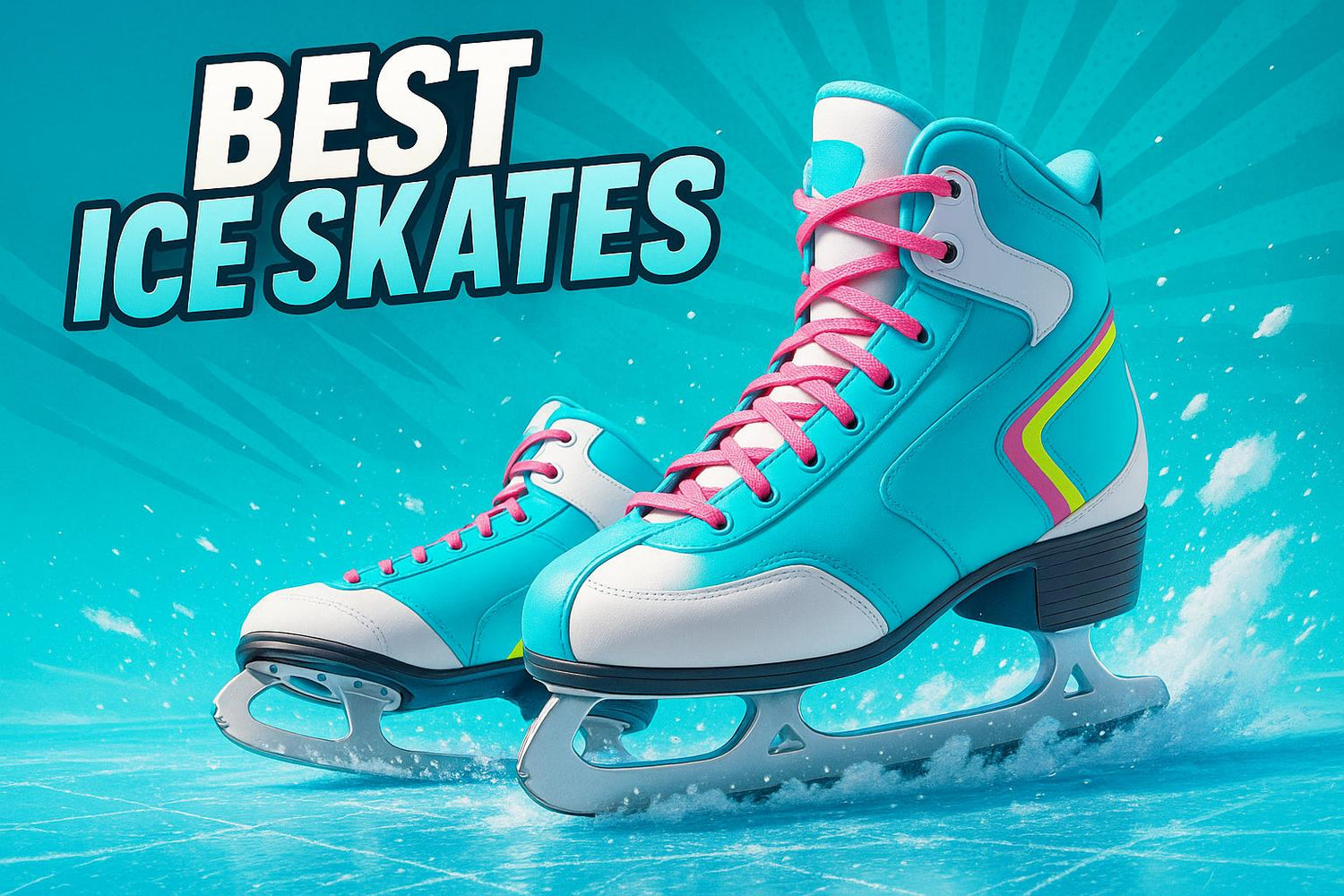
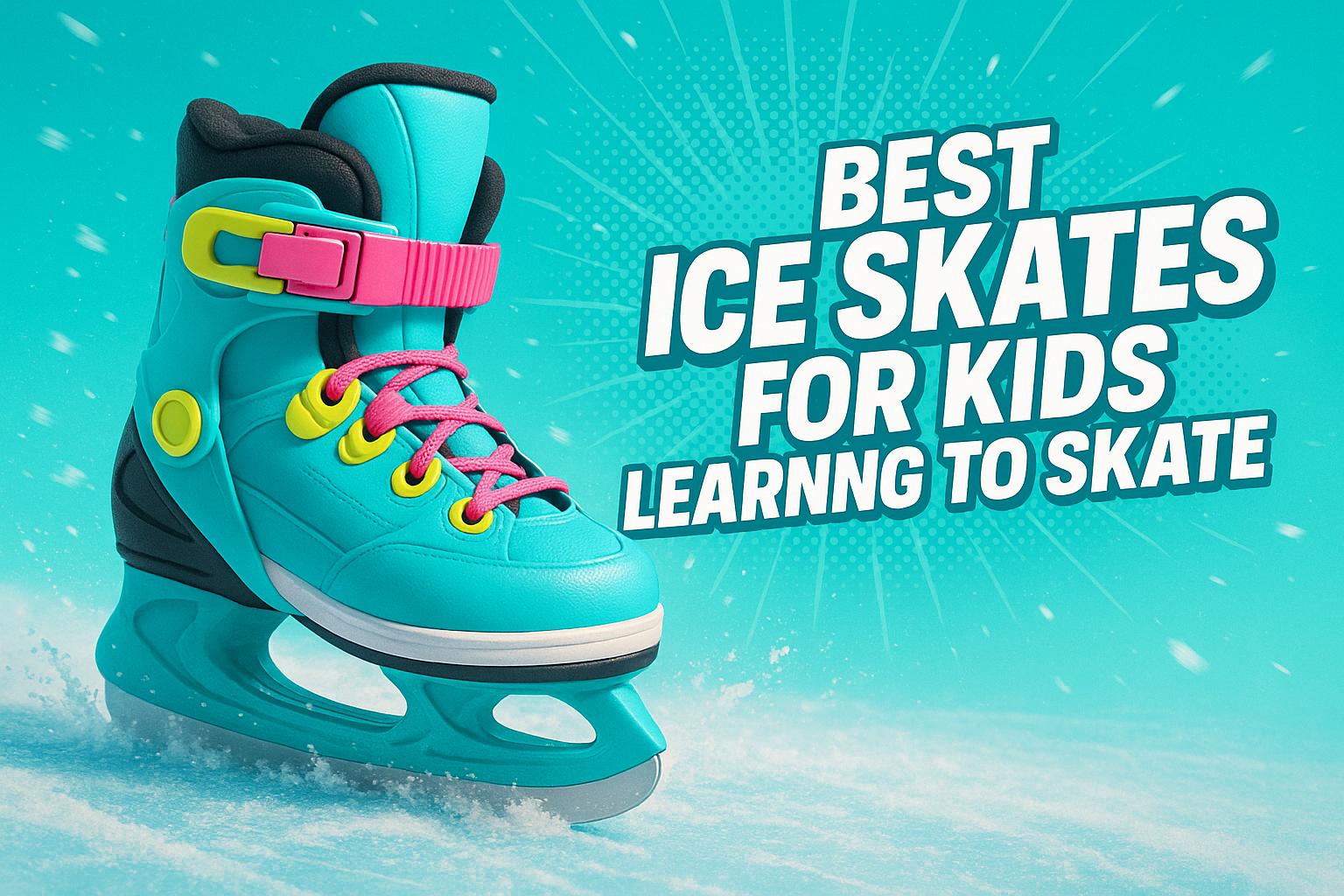
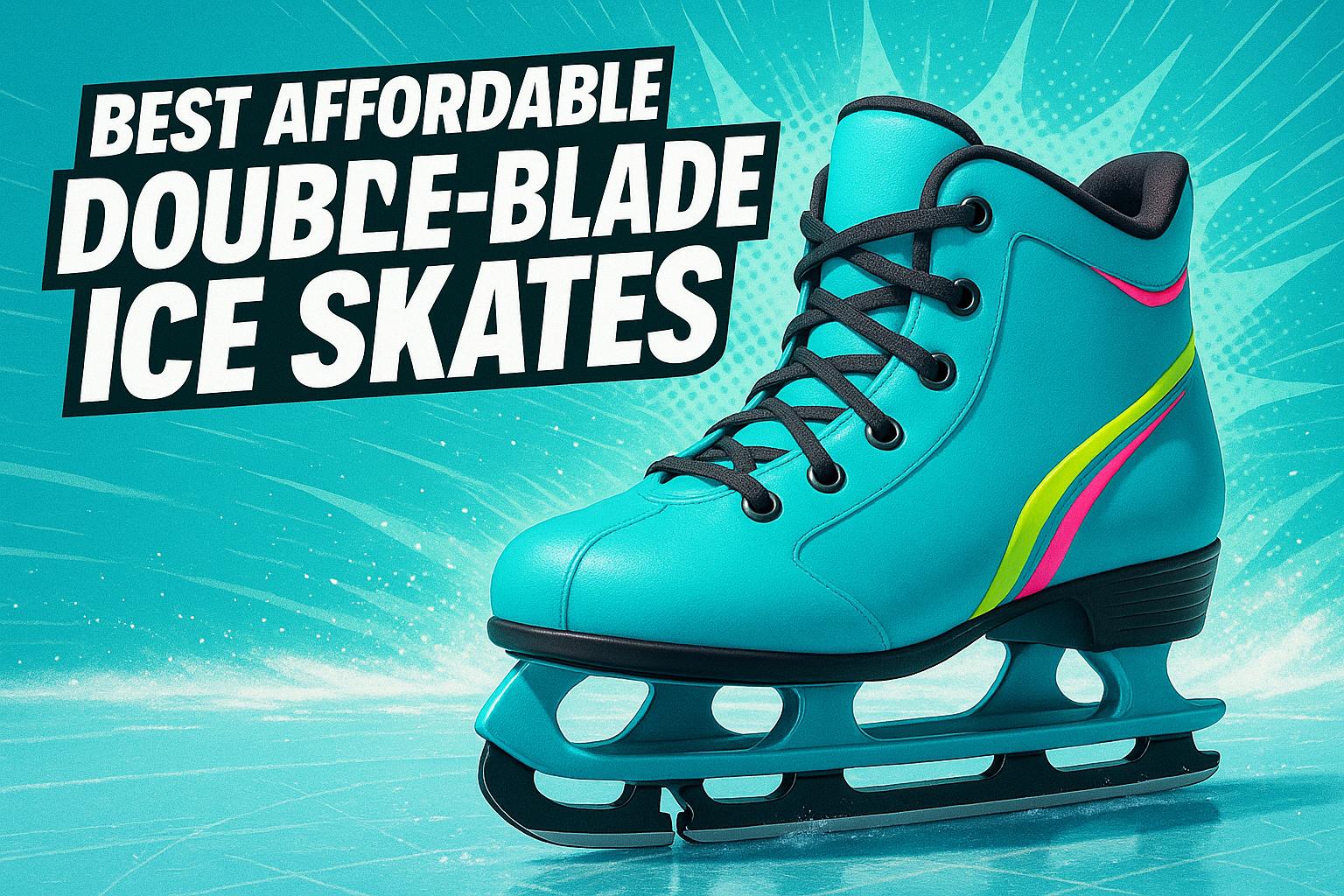




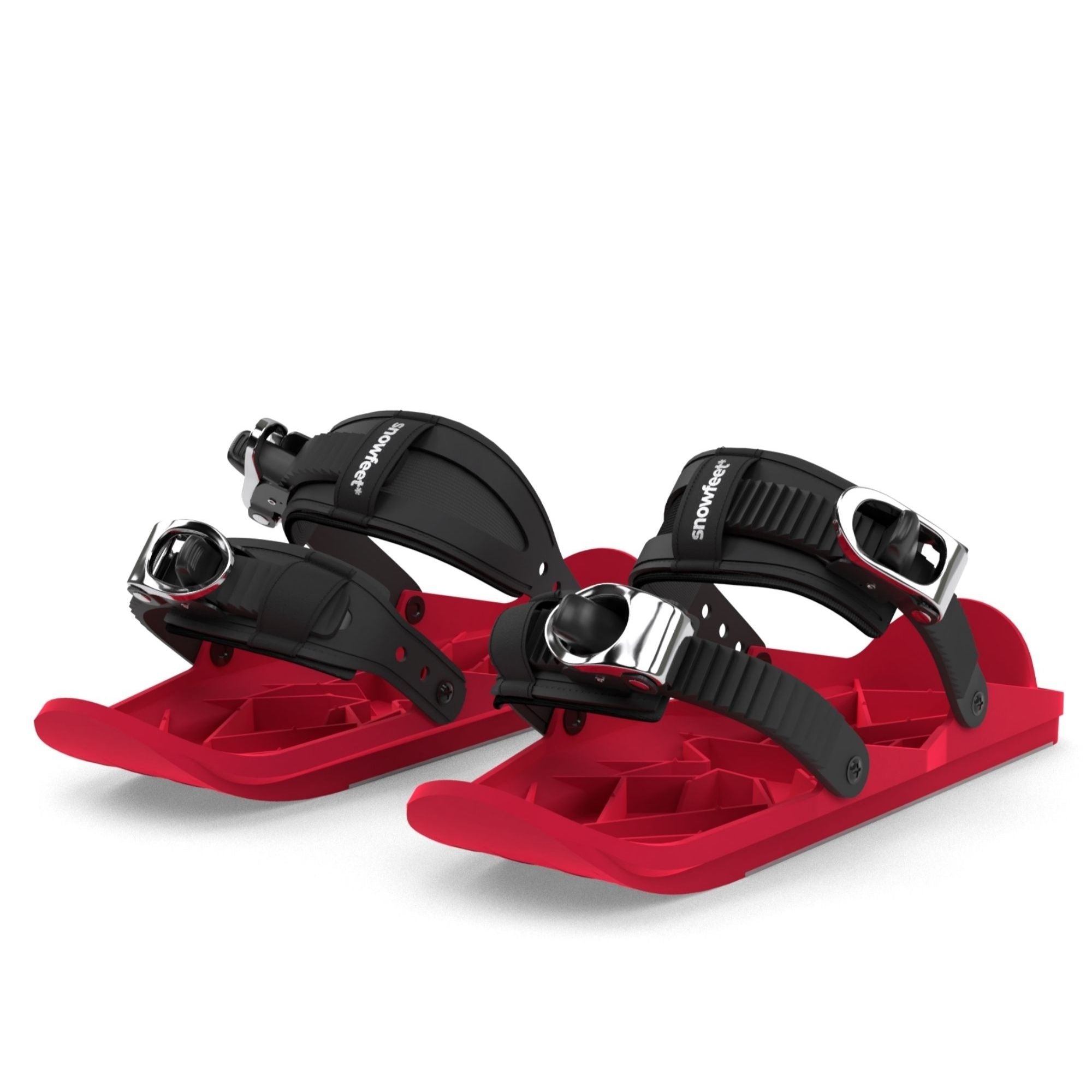
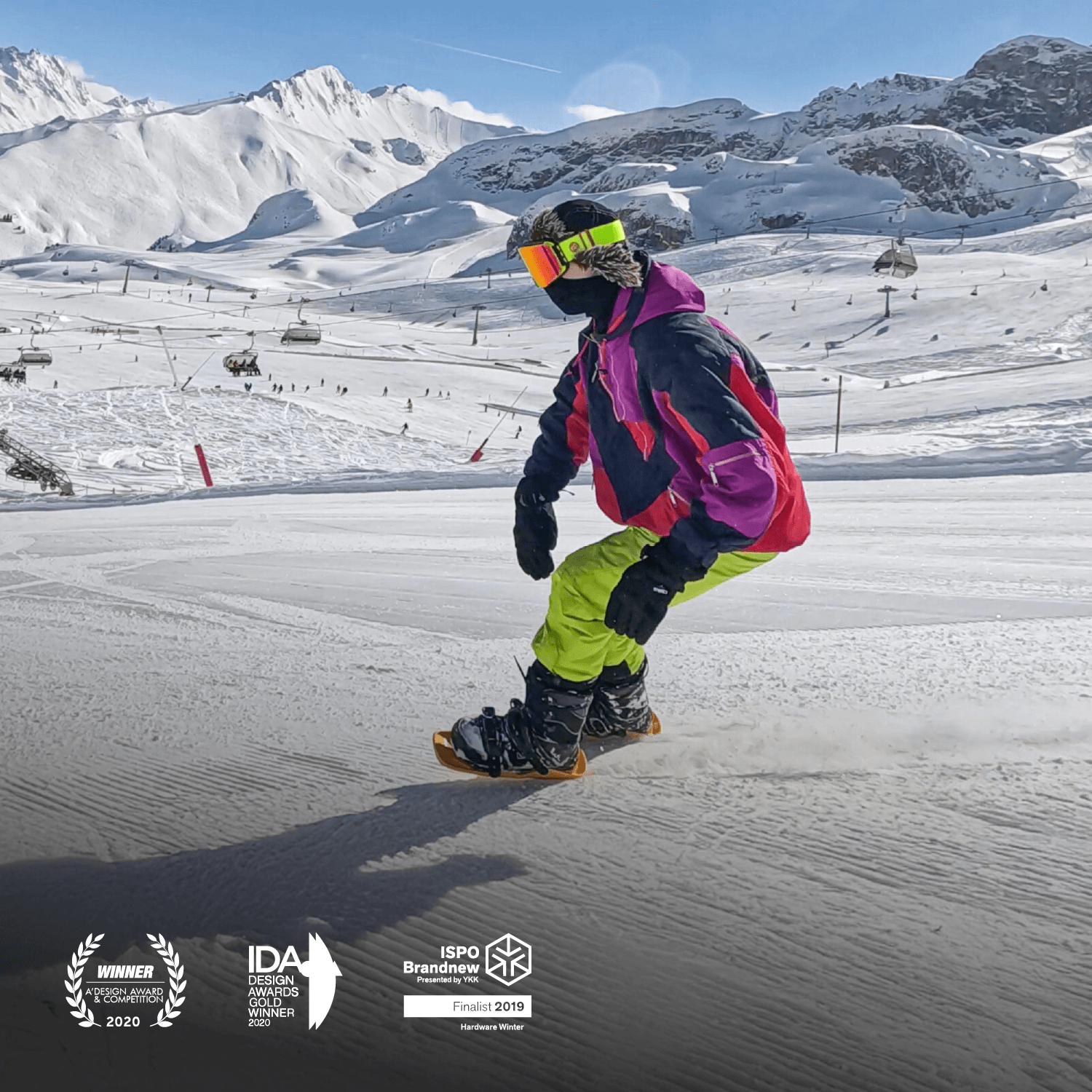




Leave a comment
This site is protected by hCaptcha and the hCaptcha Privacy Policy and Terms of Service apply.